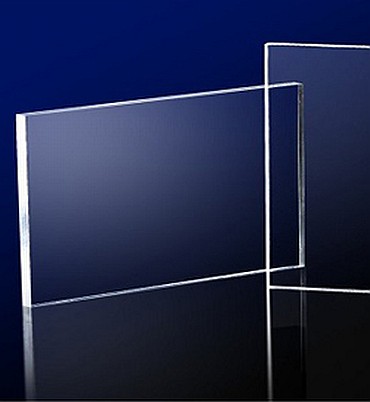
Glass and acrylic are becoming common materials for a spread of projects due to their aesthetic appeal and adaptability. Acrylic, sometimes mentioned as plexiglass, is a popular material for signage, displays, and even furniture since it’s lightweight, shatter-resistant, and comes in a sort of colors and textures. Glass, on the other hand, is usually utilized in architectural designs and interior decor due to its usefulness as a transparent, long-lasting material that will foster an air of openness in places.
The practical advantages of acrylic and glass also contribute to their popularity. Acrylic is a more economical choice for several tasks than glass since it’s easier to figure out, is often shaped into numerous shapes, and is less expensive. Glass, on the other hand, is a low-maintenance option for applications like windows, doors, and countertops due to its durability and resilience to stains and scratches.
Properties of Acrylic
Known for its strength, acrylic is less likely to interrupt than glass and is impact-resistant. Due to its transparency, which makes it a well-liked option for aquariums and display cases, it provides clear visibility. Acrylic is lightweight and easier to handle and transport than glass, albeit it’s strong. When it involves price, acrylic is usually less costly than glass, making it a wise choice for a variety of uses.
Properties of Glass
While glass is more durable than acrylic, it’s more susceptible to breaking when struck. It’s perfect for windows and lenses due to its transparency, which offers outstanding clarity. Because glass is heavier than acrylic, it’s going to be something to be considered for a few projects where weight is a problem. Glass, however, is usually more costly than acrylic, making it a premium option for people prepared to pay a premium for its superior quality and visual appeal. Glass and acrylic each have unique qualities that require consideration. Acrylic provides an economical combination of strength, transparency, lightweight design, and affordability. Glass, on the other hand, is costlier and heavier than other materials but offers superior clarity and sturdiness. The simplest option between acrylic and glass will depend upon the way you balance these important characteristics to satisfy your objectives, which can vary depending on the particulars of your project.
Comparison of Acrylic and Glass
It’s crucial to match the strength and sturdiness of glass with acrylic. Acrylic is a safer alternative for a few applications because it’s considered to be impact-resistant and less likely to interrupt than glass. Conversely, glass can tolerate higher temperatures and is usually more resilient to scratches than acrylic.
Glass is usually chosen for its unparalleled transparency and clarity due to its capacity to carry onto its transparency throughout time. Despite being clear, acrylic can turn yellow or murky when exposed to certain chemicals or sunshine over an extended period. When evaluating the material’s durability and visual appeal across a variety of applications, this distinction is important.
Acrylic is way lighter than glass in terms of weight and portability, which makes it simpler to handle and move. This capability is extremely helpful for projects that require installations in high places or frequent repositioning. Glass, on the other hand, feels more substantial and is denser, which is desired in some design contexts.
Factors to Think About When Choosing Between Acrylic and Glass
When deciding between acrylic and glass for your project, there are a couple of things to think about. Because acrylic, sometimes mentioned as plexiglass, is lightweight and shatter-resistant, it is a safer choice for outdoor or high-traffic areas. Glass, on the other hand, is ideal for applications where visual quality is crucial since it provides a far better degree of clarity and scratch resistance. When choosing between the 2 materials, it is important to consider their benefits and disadvantages thoroughly.
The price distinction between glass and acrylic is another crucial factor. Since acrylic is usually less costly than glass, it’s going to be a less expensive choice for giant projects or situations where price is a key consideration. Glass is renowned for its strength and lifespan, though, so in some cases, the additional initial cost could be justified. You’ll choose the fabric that gives the simplest value for your needs by assessing your budget and also because of the particular requirements of your project.
Lastly, when deciding between acrylic and glass from Acrylic Sheet Suppliers, it is important to think about upkeep and care requirements. Compared to glass, acrylic is a smaller amount likely to smear and is polished to eliminate scratches, making it simpler to wash and maintain. Despite being more resilient, glass will need more regular cleaning and maintenance to take care of its finest appearance. For a hassle-free experience over time, believe in the quantity of maintenance you’re willing to place in and choose the fabric that suits your maintenance preferences.
